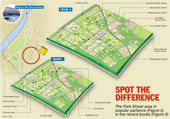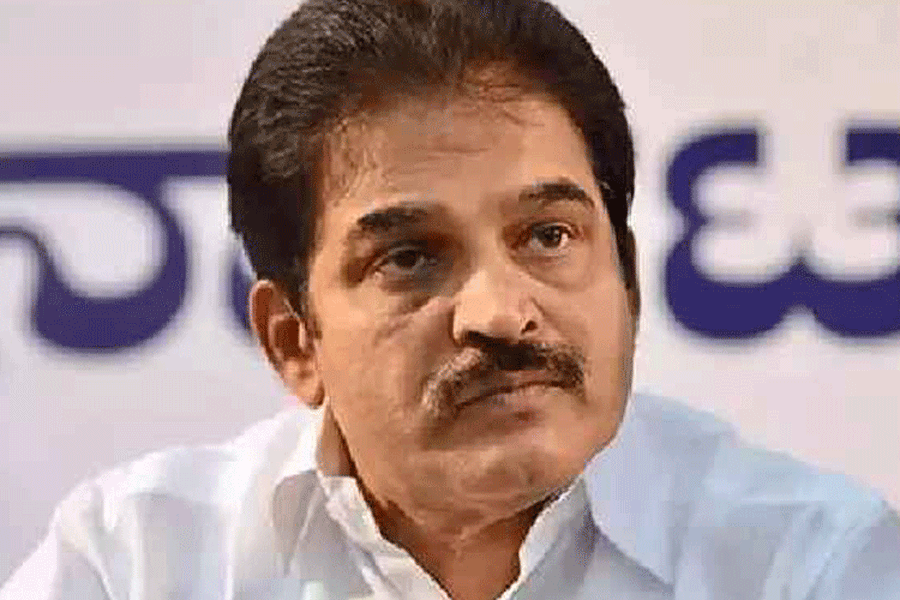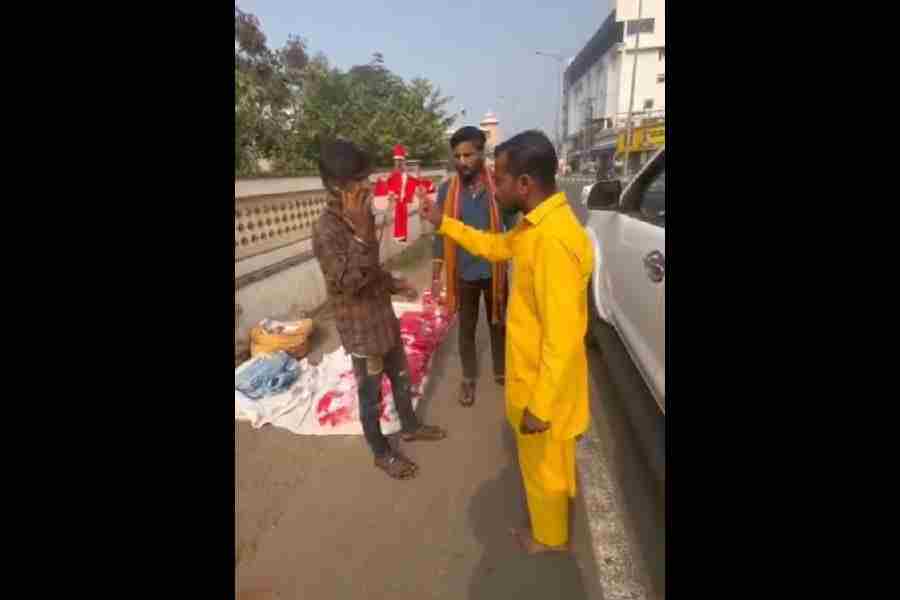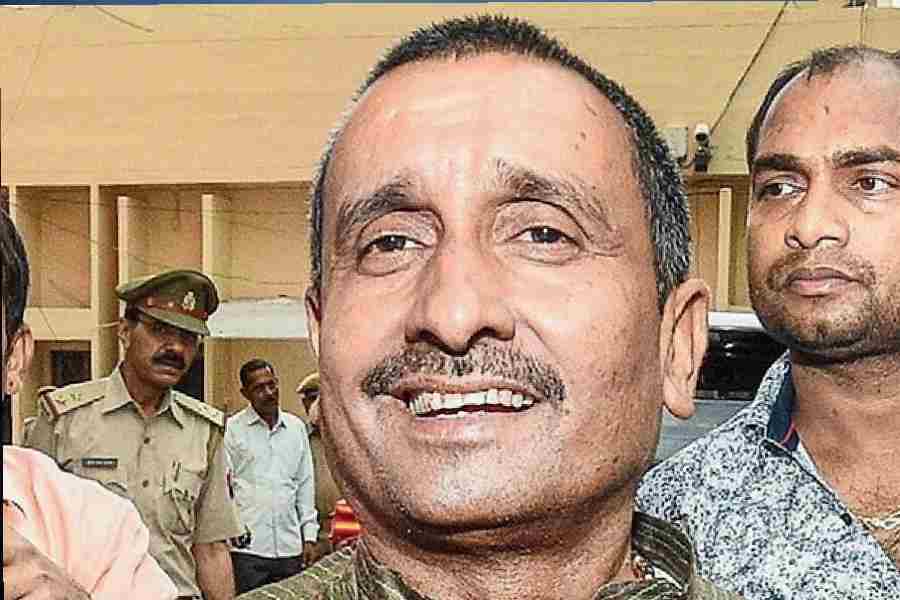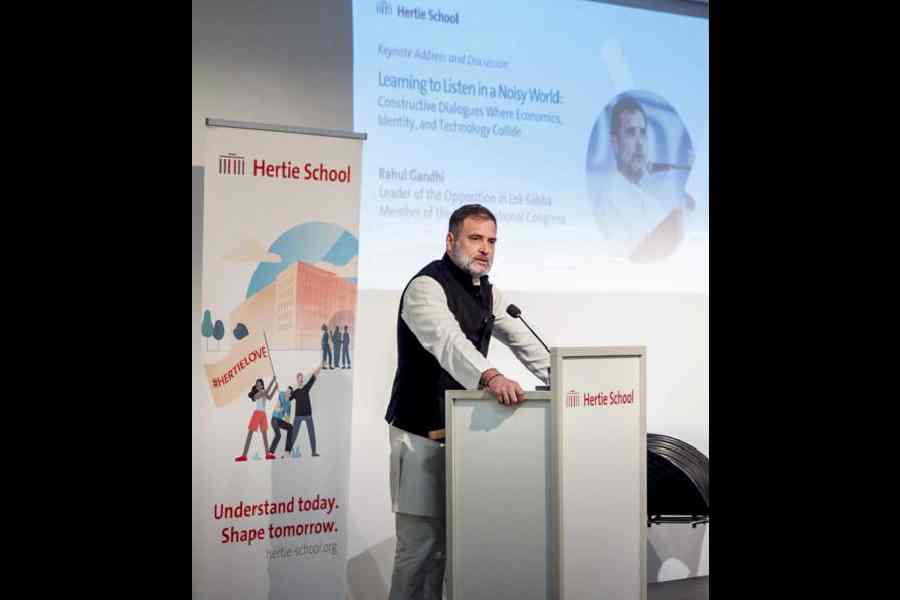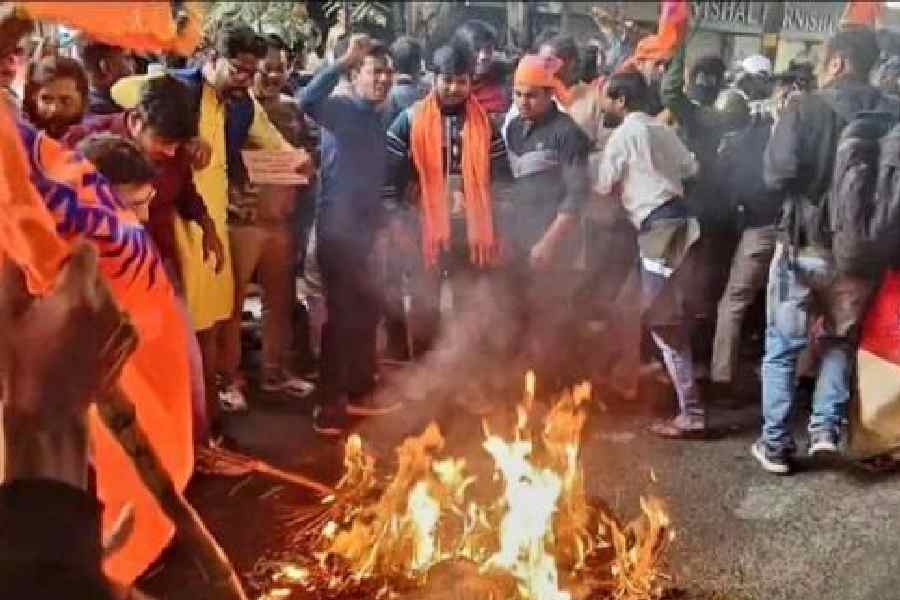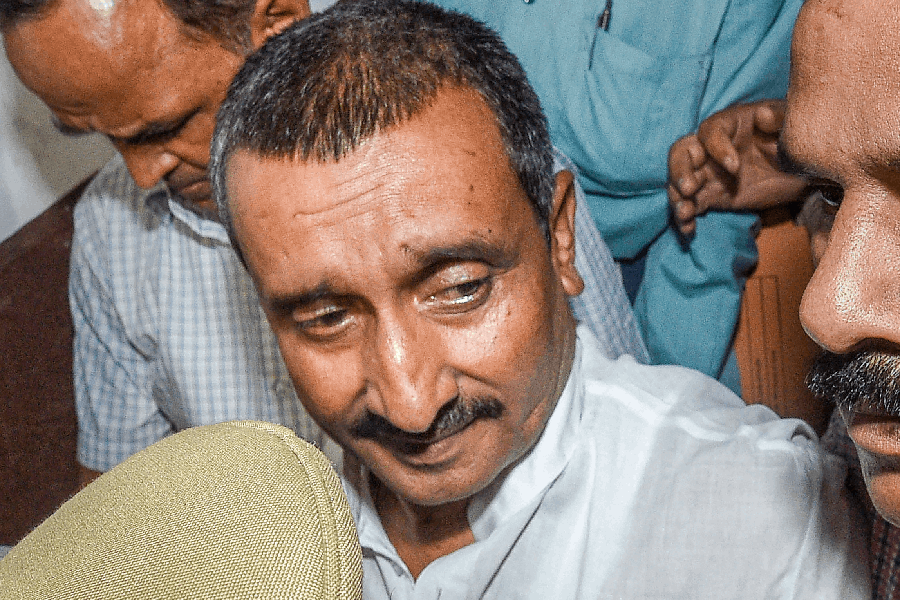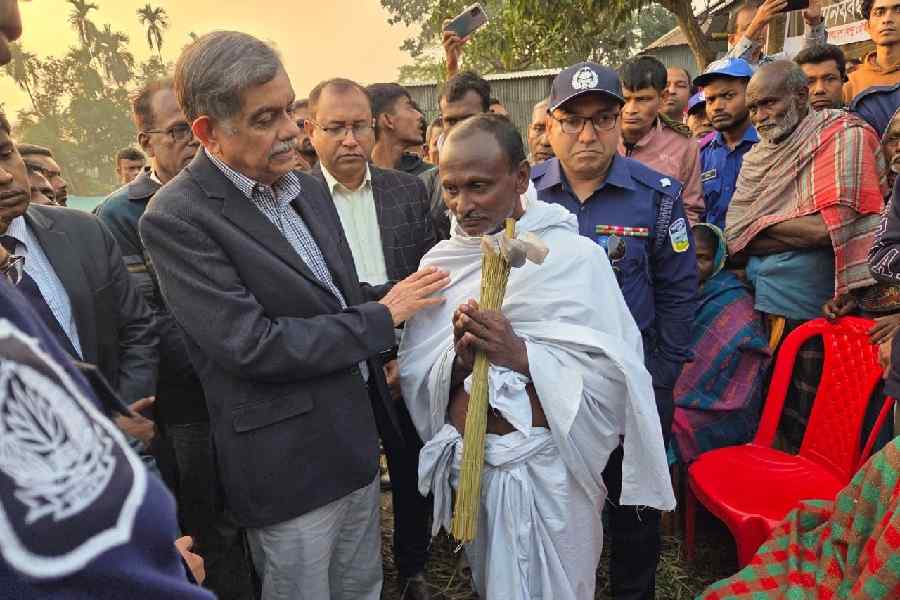 |
Union minister of shipping Mukul Roy has expressed a desire to rename Nimtala Ghat as Rabindra Ghat. Some feel it would be apt, not as an honour to Rabindranath, but symbolically. A burning ghat named after Tagore would, with the right touch of morbidity, announce the final departure of Bengal’s greatest culture icon from contemporary life, which is happening unchecked anyway, irrespective of the number of Rabindrasangeets being remixed for the audience of multiplex Bong films.
But many more object to the idea, for many reasons.
Says writer Sunil Ganguly, one of the most vocal critics of the proposal: “Rabindranath was cremated at Nimtala Ghat. But that does not mean that the ghat’s name has to be changed.” Professor Swapan Chakraborty, who teaches English at Jadavpur University, agrees that the change is uncalled for. “If a change has to be made it should be to the name of some benefactor, such as with Kashi Mitrer Ghat, not of a celeb cremated there. Could one name a burial ground after someone buried there?” he asks.
“There could be a chain reaction,” he adds. Will Nimtala Ghat Street have to change its name, as a consequence? It will only be logical to call it Rabindra Ghat Street. How many shopowners would have to paint their signboards again?
Besides, if everything associated with Rabindranath has to be named after him, his school Oriental Seminary has to be renamed Rabindra Seminary. And if a place associated with him ought to be named only after him, then it could probably amount to the “neglect” of other great men. Among the other luminaries who were cremated at Nimtala Ghat are Kaliprasanna Singha, Ishwarchandra Vidyasagar, Bankimchandra Chattopadhyay, Maharshi Debendranath Tagore, Pyarichand Mitra, Dwijendralal Roy, Sukumar Ray, Manik Bandyopadhyay and Tarashankar Bandyopadhyay: Bengal’s Renaissance and its afterglow summed up. Why should they not be claimants to the “honour” too?
And Rabindranath already has to his credit Calcutta’s greatest landmark, Rabindra Setu (Howrah bridge for the uninitiated), an avenue, Rabindra Sarani, an auditorium, Rabindra Sadan and three Metro stations (Rabindra Sadan, Rabindra Sarobar and now Geetanjali), not to mention numerous other smaller institutions and structures.
 |
| Nimtala Ghat in 1979 |
Stricter standard
Hopefully Nimtala Ghat won’t change its name, for nothing much has come of the proposal except the brouhaha. To change the name of a road, a proposal has to reach the Road Renaming Committee of the Calcutta Municipal Corporation, which is currently chaired by historian Amalendu De and has several other distinguished scholars as its members. The Nimtala Ghat proposal hasn’t been placed before the CMC yet.
The mayor is not in favour of the proposal either. He feels that not every suggestion should be entertained. “There should a standard for the acceptability of the new name. It is also important to consider which name is being replaced, and by whom,” says Bikash Ranjan Bhattacharyya. He adds that there is no CMC provision for renaming a ghat. Though the premises of a ghat are the property of the Calcutta Port Trust, its maintenance is the responsibility of the CMC.
“Changing the name of Nimtala Ghat will be distorting history,” says Bhattacharyya.
Yet if Nimtala Ghat does have its name changed into something as different as Rabindra Ghat, ironically, that too will be part of Calcutta’s historical tradition.
Calcutta has about 4,000 streets in its 187 sq km corporation area. Of these, several hundreds have already changed their names, sometimes to become unrecognisable.
According to a list drawn up by the civic body, between 1892 — when the Central Road connecting Howrah and Sealdah stations was renamed Harrison Road after Sir Henry Leland Harrison, the then chairman of Calcutta Corporation — and 2003, 273 roads, streets and lanes were renamed. According to a more detailed CMC list, 168 streets and parks were renamed between 1976 — the Left Front would come to power one year later — and 2007.
Many of the names bestowed after Independence seem to be an effort to erase the colonial past and install Indian heroes. As a result, many roads are hardly what they seem.
The Park Street area (see map) is a good example. If you are entering Park Street from Chowringhee Road, you are actually entering from Jawaharlal Nehru Road, named so in 1964. JL Nehru Road doesn’t cover the entire Chowringhee: it stretches from Esplanade to Park Street.
But then Park Street isn’t Park Street of course; it has been Mother Teresa Sarani since 2002. If you have turned into Park Street, sorry, Mother Teresa Sarani, from Russell Street, you have actually come from Anandilal Poddar Sarani, which acquired the new name in 1982. If you want Cello Kabab at Peter Cat, alas, it is no longer possible, not till the restaurant opens again, but before the fire at Stephen Court, you had just to step into Middleton Row and join the long queue on the steps outside the restaurant. Sorry, not Middleton Row, but William James Sarani, renamed the same year as Russell Street. But if you prefer the crab dishes at Mocambo, you have to just step into Free School Street on the left, which became Mirza Ghalib Street in 1969.
The year 1982, in fact, was life-changing for Calcutta’s streets: 27 streets got a new name that year. In 1982 Little Russell Street turned into Nandalal Basu Sarani and Pretoria Street morphed into Dr Harendra Kumar Mukherjee Sarani.
Camac Street had the most dramatic reincarnation of all — it became Abanindranath Tagore Sarani. One is not sure how Abanindranath, the great artist and writer of haunting fairy tales who also had an acid tongue, would react to being set up among the street that houses huge unprepossessing offices and shopping destinations.
History mystery
 |
| The Rabindranath Tagore memorial constructed by the civic body at the ghat, where the poet was cremated |
The point is not aesthetic sense alone. In fact, aesthetics, though Calcutta’s city fathers need it badly, could be subsidiary here. Streets are a matter of functionality. How many people know of the new names?
“What is the point of renaming Nimtala Ghat Rabindra Ghat?” asks Debasish Basu, a member of the heritage commission of the CMC. If the idea is to preserve the memory of Rabindranath, it is better achieved with a plaque with information on him, he feels.
“The base of the memorial to him at Nimtala Ghat has developed cracks. That could be looked into,” says Basu.
Mistakes and puzzle paths
While researching into the life of Soorjo Coomar Goodeve Chuckerbutty, one of the first four young men from Bengal who went to study in Britain in the mid-nineteenth century, Basu encountered a serious problem. Chuckerbutty, who was born into a poor Brahmin family but could make his way to the Medical College and bilet, had lived near Ritz Continental, Peerless Inn now.
The house had a Chowringhee Road address. “But since half of Chowringhee became Jawaharlal Nehru Road, all the addresses changed, making it difficult to locate the previous address,” says Basu.
The new names could be absurd. Or even wrong.
Elgin Road is now Lala Lajpat Rai Sarani. But according to the CMC’s Calcutta Municipal Gazette, May 7, 1996, Elgin Road was renamed after Lal Bahadur Shastri following the Prime Minister’s death in 1965 in Tashkent. No one can now explain why it is Lala Lajpat Rai Sarani.
Or Bangabandhu Sarani, the new name of Circus Avenue since 1998. Apparently the street was first named after Sheikh Mujibur Rahman, an editor of a newspaper who died in 1946. But through the years, the editor merged into the architect of Bangladesh’s liberation.
Other mysteries remain. “What is the point of turning Waterloo Street into Nawab Siraj-ud-daula Sarani?” asks Abhik Ray, the former head of the history cell of the State Bank of India. “There are two Netaji Subhas roads”, which can only confuse, he adds.
And why should Hungerford Street turn into Picasso Bithi? Picasso in a dainty garden path? How do you reconcile Incinerator Road with Hellen Keller Sarani? Prinsep Street with Biplabi Anukul Chandra Street?
Nimtala Ghat is said to have got its name from an old neem tree. It is believed that Job Charnock landed there on August 24, 1690, under its shade.
The neem tree was destroyed in the fire of 1882. But why not keep both Rabindranath and Job Charnock as part of Calcutta’s history?
The british did it too, quite often
![]() Not that Independent India renamed streets alone. If governments after Independence went on a renaming spree, the British did it quite often too.
Not that Independent India renamed streets alone. If governments after Independence went on a renaming spree, the British did it quite often too.
![]() The study of the first maps of Calcutta, such as Mark Wood’s map of 1784, followed by Upjohn’s of 1794, shows the growth and new names of streets. The city experienced the first renaming of streets under the rule of Lord Wellesley.
The study of the first maps of Calcutta, such as Mark Wood’s map of 1784, followed by Upjohn’s of 1794, shows the growth and new names of streets. The city experienced the first renaming of streets under the rule of Lord Wellesley.
![]() The British continued to rename Calcutta streets, and many in the 20th century were named after Indians, even if they were politically opposed to the Imperial rule.
The British continued to rename Calcutta streets, and many in the 20th century were named after Indians, even if they were politically opposed to the Imperial rule.
![]() Central Avenue was renamed Chittaranjan Avenue in 1926. Janbazar Street, which became Corporation Street, was named after S.N. Banerjee the same year.
Central Avenue was renamed Chittaranjan Avenue in 1926. Janbazar Street, which became Corporation Street, was named after S.N. Banerjee the same year.
![]() “But the British did not name roads after revolutionaries. They did so after those who participated in the parliamentary political system approved of by them,” says historian Debasish Basu.
“But the British did not name roads after revolutionaries. They did so after those who participated in the parliamentary political system approved of by them,” says historian Debasish Basu.

